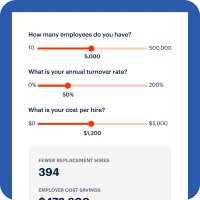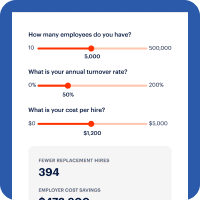Payroll is a big deal. It’s a lifeline for employees, and it’s the largest expense for a company. The expenses directly tied to employee compensation are vast:
- Regular and overtime wages
- Bonuses
- Commissions
- Benefit days such as vacation and sick time
- Severance pay
- Fringe benefits
- Health benefits
These don’t include mandatory liabilities like Social Security and Medicare taxes, federal and state unemployment insurance or additional taxes state and local governments may require.
When all is said and done, wages can account for a large part of the revenue of small businesses. If you’re not careful, payroll mistakes can cut into the revenue even more. Here are four tips for saving money on payroll.
1. Consider outsourcing payroll
Are you spending too much time and internal resources on payroll? It can be time-consuming and expensive. If you have a small or medium-sized business, you might not have the ability to dedicate the appropriate resources to the intricacies of payroll, either. It’s easy to miss deadlines, forget about new regulations, or make errors when calculating more technical aspects of payroll like items exemptions from payroll taxes. If you handle payroll in-house, there may be costs associated with the time and effort spent on payroll administration, including calculating employee hours, tracking benefits, processing deductions, and generating paychecks or direct deposits.
- Mitigate the risk of payroll
- Eliminate penalties
- Complete payroll more cost-effectively
2. Switch the frequency of payroll
Most companies process payroll bi-weekly because it’s the cheapest and most simple way to process it, regardless of whether you are running it in-house or using an outsourced payroll vendor. Bi-weekly payroll can sometimes lead to problems for employees since bills and rent are usually due on the 1st of each month or on their own schedule.
On-demand pay companies like DailyPay allow your employees to access their earned income whenever they’d like. With DailyPay, employees are able to access their accrued and unpaid earnings ahead of payday, and then those transfers are thereafter resolved with DailyPay through your regular payroll process, so your regular payroll cycle isn’t disrupted.
3. Improve direct deposit enrollment
Companies that offer perks like DailyPay see an increased amount of direct deposit enrollment if the software requires it. Nicole Lehman from The Maids franchise noted that when her company signed on to DailyPay, “I had three people that were not on direct deposit get set up with banking information just so they could use the DailyPay service.”
If you have “unbankable” employees, or employees who are unable to get a bank account for whatever reason, you can offer resources like our Visa® pre-paid Friday Card as an alternative to paper checks. The Friday Card by DailyPay gives employees instant access to their earned pay for no fee.
4. Improve employee retention
In industries that primarily pay minimum wages, the percentage of wage in relation to a company’s overall revenue may seem low, but with high rates of employee turnover, this isn’t actually the case.
Low wages may be great for business owners but it can cultivate higher amounts of turnover. Each time an employee quits, you lose time and money. This money gets added to the total cost of payroll, which includes time spent onboarding and offboarding employees, setting up banking or checking account information and allotting accurate tax deductions for each employee. By improving employee retention, you can save money on payroll.
- Adopt paperless payroll and online self-service
Implement an online self-service portal where employees can access their pay stubs, tax forms and make changes to their personal information. This reduces administrative tasks, printing costs, and mailing expenses.
Find how DailyPay can improve your payroll process, and save money for your bottom line.













